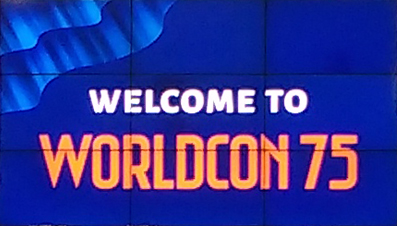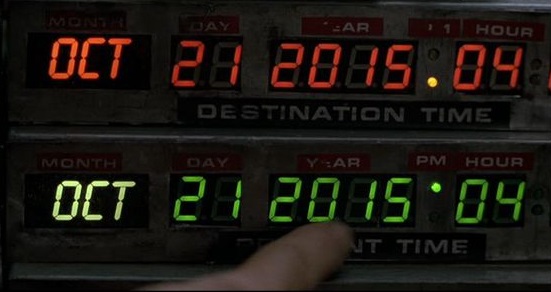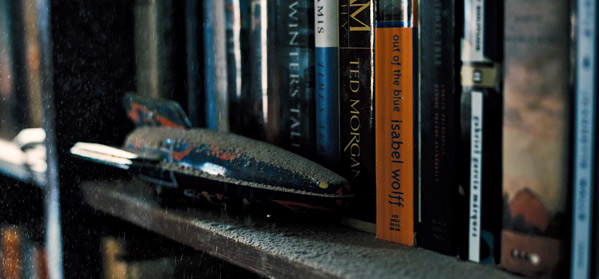Speculations on Speculative Fiction: Is This Alastair Reynolds’s Most Political Novel?
26/09/2018
 Elysium Fire by Alastair Reynolds is a Brexit novel. Not in the sense of, say, how Dave Hutchinson’s Europe books (2014, 2015, 2016) captured the zeitgeist of the populist, Balkanizational energies which prefigured the referendum. Or not in the way literary fiction like Ali Smith’s Autumn (2016) uses the referendum aftermath as a backdrop for the relationship between characters. No, Elysium Fire is more focused than that, explicitly concerned as it is with voter manipulation in a society that prides itself on abiding by ‘the will of the people’ (158) and offering us a villain who, with shades of so many prominent Brexiters, is the scion of privilege rather than ‘the common man he makes out’ to be (15). In the process, Reynolds tackles the inherent inconsistencies of the Brexit movement specifically, as well as, in a more general sense, the manner by which voters making bad choices are the Achilles’ heel of otherwise robust democratic systems. To the author’s credit, he does not settle for any easy answers…
Elysium Fire by Alastair Reynolds is a Brexit novel. Not in the sense of, say, how Dave Hutchinson’s Europe books (2014, 2015, 2016) captured the zeitgeist of the populist, Balkanizational energies which prefigured the referendum. Or not in the way literary fiction like Ali Smith’s Autumn (2016) uses the referendum aftermath as a backdrop for the relationship between characters. No, Elysium Fire is more focused than that, explicitly concerned as it is with voter manipulation in a society that prides itself on abiding by ‘the will of the people’ (158) and offering us a villain who, with shades of so many prominent Brexiters, is the scion of privilege rather than ‘the common man he makes out’ to be (15). In the process, Reynolds tackles the inherent inconsistencies of the Brexit movement specifically, as well as, in a more general sense, the manner by which voters making bad choices are the Achilles’ heel of otherwise robust democratic systems. To the author’s credit, he does not settle for any easy answers…
Please note: this post contains SPOILERS from here on out…
A superbly paced sequel to The Prefect (2007; now retitled Aurora Rising), Elysium Fire is essentially a police procedural – ‘A Prefect Dreyfus Emergency’ as the new series banner attests – set in the ‘Glitter Band’, a ring of ten thousand orbital habitats around the plant Yellowstone. Within the wider fictional history of Reynolds’s Revelation Space series, the Glitter Band is humanity’s Belle Epoque and home to about ‘one hundred million living souls’ (1). Each habitat is a world in its own right, each a place with its ‘own name and customs’ (1) yet all are united by a common belief in ‘Demarchist’ principles, in the sanctity of universal suffrage. Every Glitter Band citizen is equipped with neural implants which poll them constantly on ‘every conceivable matter’ and through which ‘the process of participation became as habitual as breathing’ (2). The integrity of this system is overseen by a limited force of ‘Prefects’ such as series protagonist Tom Dreyfus, an independent monitoring taskforce – part police, part tech-support – who might best be thought of as lightly armed returning officers.
Yet the accepted utopian conception of the Glitter Band – where ‘wealth and power were in almost limitless abundance’ (1) – has been upset. Public confidence in the Prefects and in the security of the Glitter Band has been damaged by the so-called Aurora Crisis of the preceding novel, and this has allowed for the emergence of other narratives. Specifically it has allowed room for a breakaway movement led by one Devon Garlin. As if to hammer home the Brexit comparison, our first glimpse of Garlin – ‘not the only figure associated with the breakaway movement, but he was by far the most influential and outspoken’ (14) – occurs in a kind of idealised version of rural England which could not be further removed from the realities of a high-tech and highly connected inter-orbital economy. He makes his initial bid at separatism on a habitat where ‘modest, stone-built homes dotted a gentle hillside, with smoke curling up from their chimneys. A waterwheel turned next to a mill, and off in the distance two woodcutters were at work with manual saws’ (11). ‘We surrendered our sovereignty,’ he tells the inhabitants of the Glitter Band as though reading from a UKIP manifesto (13). He maintains that separatist habitats are – stop me if you have heard this one before – ‘taking back control’ (13): ‘Control to manage their affairs in a way that suits their needs, not those of some distant, disconnected network of overseers’ (13). Thus Garlin sets himself up as ‘the voice of the people’ (15) and surrounds himself with ‘common thugs and bully-boys’ (287) as his ideas take ‘a toxic, ineradicable hold’ on the wider population (14).
I will resist the temptation to attribute aspects of Garlin’s background – the wealth, the private education, the supposed historic linage – to specific real-life figures from the Brexit movement but, suffice to say, the character emerges as a composite of the current British political rogue’s gallery. Yet Reynolds grants Garlin a far more interesting and compelling backstory than the Johnsons and Farages and Rees-Moggs of the world. Indeed, one could argue that Garlin, though despised by the Prefects as someone ‘who disseminates lies and half-truths for their own ends’ (129), is in fact Elysium Fire’s most engaging character and, rather than simple villain, is a true tragic antagonist compelled by a mix of idealism and circumstances beyond his control. This is never clearer than in the strand of the novel which follows his childhood (on a landed estate, of course) growing up with his brother Caleb in a brilliantly warped re-imagining of the Cain and Abel story (pleasantly eschewing a one-to-one match-up for a remix of elements such as each brother making sacrifices of sorts to prove themselves; one being favoured by the god-like powers guiding them; a visible mark set upon one who is exiled after a fashion, and so on). Reynolds transforms this straightforward story into a rich and multi-layered personal history for Garlin, complicated by instances of targeted amnesia and, in Brexiter fashion, a conviction that he recalls an almost mythological version of history (in this case the near legendary ‘Amerikano’ era of early interstellar colonisation). These inconstancies are eventually unsustainable for the character, who must in the end confront himself – in the most direct sense imaginable – when it is revealed that Julius is actually Caleb who has had his memories rewritten by the real Julius.
Such is the division and confusion of Garlin’s true self (echoing divided characters found elsewhere in Reynolds’s work such as the Ness sisters of 2016’s Revenger, Tanner Mirabel in 2001’s Chasm City, or the Chiku Akinya clones of 2013’s On the Steel Breeze) that, by Elysium Fire’s conclusion, even the identification of Julius and Caleb has been thrown into doubt as the separatist finds ‘an ending of sorts’ (391) in a union with his brother, their very bodies merging in a reckoning which is both as ambiguously ironic as it is ironically inevitable. For the reader, such irony has perhaps been foreshadowed by the chosen names (which are in fact his two middle names) of the novel’s separatist-in-a-time-of-Brexit: a merging of Devon, a county in southwest England, and Garlin, a commune in south-western France. The result is a character constructed, fittingly, to perform double duty. On the one hand Garlin, uncovering his true identity in the pursuit of his breakaway agenda, comes to embody the perceived dissolution of personal and national narrative certainty which some have glimpsed behind the Brexit movement. On the other hand, his very name announces the inescapability of blended European identity to the reader from the outset. In this way Garlin provides the link between the political allegory of the novel’s B-plot – the separatist movement – and its more recognisably science fictional A-plot, an investigation into a spat of citizens’ heads melting down (if ever there was a metaphor for the Brexit campaign…) as neurological implants malfunction across the Glitter Band. In both cases the crime is the tampering with flaws in the fundamental and supposedly inviolable machinery of democracy, that being in the philosophical sense – the idea that democracy can only be preserved if it chooses self-preservation – and in the actual machinery emplaced inside the brains of citizens.
Within the Glitter Band, democratic participation is conducted through a cranial implant known as the ‘Voi kernel’. The device is named after its creator Sandra Voi, the founder of Demarchist society and, not unimportantly, the ancestor of Julius Devon Garlin Voi and his brother Caleb. Aware that ‘true democracy embodies the possibility of its own dissolution’ (158), Voi granted herself and her descendants the ability to ‘guide the hand of democracy, to keep it from undoing itself’ or ‘from making choices it might come to regret’ (158). Voi intended such interventions to be ‘limited to marginal ballots, where a one or two percent shift is all that’s needed’ (184). It is this concept of ‘intervention’, along with the question of who should be allowed to intervene, which underpins the ethical quandary (of which Garlin is but a symptom) at the heart of the novel. The dishonesty within the Voi kernel, within the apparatus of democracy itself, may act, counter-intuitively, as a corrective inversion of the flaw within the righteous idea of democracy, but it is nonetheless a criminal act. Elysium Fire is clear that a ‘guiding hand’ such as Voi’s is a bad idea, offering examples of the corruption and moral bankruptcy of Julian and Caleb’s parents, as well as instances of how the brothers themselves abuse their privileged access, but nonetheless – and this is the uncomfortable but brilliantly executed slight-of-hand which Reynolds orchestrates in Elysium Fire – it is difficult for the reader not to speculate about how easily such a domestic intervention might have spared Britain from its current predicament. Certainly the figures given in the novel – again, a shift of ‘one or two percent’ – imply a certain preoccupation with the contemporaneous Brexit vote carried by a mere 1.9%. Changing such a result would, of course, have been fraud. It would have been unethical. It would in fact have been immoral. But, through the possibilities inherent in the Voi kernel’s backdoor, Elysium Fire nonetheless leaves even the most principled of readers considering if such intervention would have been correct?
That the question of Brexit should so preoccupy Reynolds in his first major work since the referendum is not surprising. After all, before he was a full-time author he spent almost fifteen years working for the European Space Agency in The Netherlands and so it is hardly a leap to wonder if the anger Prefect Dreyfus experiences towards Garlin might be a reflection of the author’s own feelings at the damage being done by Brexit’s ‘shallow populism’ (289)? Yet as a novel rather than a work of political theory or moral instruction, there is no onus on Elysium Fire to offer actionable solutions to the self-inflicted wound that is Brexit. If anything, the novel’s implication that good old-fashioned police work can temper the worst ramifications of ‘populist, rabble-rousing nonsense’ (135) is perhaps too naïve for our current reality (in Dreyfus, Reynolds offers a robust investigative response, a strategy of following the shadowy money funding the breakaway movement, but one sees in real life how ineffectual such a response can too often be). For Dreyfus may be able to resolve his latest emergency by forcing Garlin to confront the inconsistencies in his identity and hence in his philosophy, but one suspects that real life Leave voters cannot be so easily convinced. The Brexit process they have set in motion has already proven too vulnerable to ‘misjudgements… over-reaction on both sides. Regrettable acts. Provocation and counter-provocation. Wiser minds will attempt to slow the fragmentation, even turn it back. But that wheel, once started turning, will not be easy to stop’ (366).
______
Other posts you may find of interest:
 Speculative Fiction and Literary Fiction are two parts of the same organism. Go far enough back and you find that they share a common ancestry (the cornerstones of the traditional western canon – be that the gods of The Odyssey or the ghosts and witches of Shakespeare – are all dependent on elements of Fantasy). Project yourself far enough into the future and you can imagine them becoming the same thing once again (‘any sufficiently advanced technology is indistinguishable from magic’ might as well be ‘any sufficiently imaginative Literary Fiction is indistinguishable from Fantasy’). In the present, of course, critics differentiate between them by – if I may generalise – the way one depicts the realistic (or close to it) and the other proposes its own reality entirely, by looking at their rhetorical strategies, by considering their publication contexts, and so on. Readers in turn are guided by personal tastes, by how these books are marketed, and by a whole cultural and commercial architecture which surrounds them. Many people enjoy both Literary Fiction and Fantasy, though often readers tend towards one or the other. The resulting discussions over what a particular book is or isn’t, or about what kind of writing does or does not have merit (ugh) are a facet of not just genre mutability but of how genre itself is disputed territory. I’ve been thinking about this since I read Dave Hutchinson’s excellent Acadie (Tor, 2017) and here I’m going to propose a reading of that text (a reading I might someday expand into a conference paper or something) as a commentary on the fruitlessness of inter-genre squabbling…
Speculative Fiction and Literary Fiction are two parts of the same organism. Go far enough back and you find that they share a common ancestry (the cornerstones of the traditional western canon – be that the gods of The Odyssey or the ghosts and witches of Shakespeare – are all dependent on elements of Fantasy). Project yourself far enough into the future and you can imagine them becoming the same thing once again (‘any sufficiently advanced technology is indistinguishable from magic’ might as well be ‘any sufficiently imaginative Literary Fiction is indistinguishable from Fantasy’). In the present, of course, critics differentiate between them by – if I may generalise – the way one depicts the realistic (or close to it) and the other proposes its own reality entirely, by looking at their rhetorical strategies, by considering their publication contexts, and so on. Readers in turn are guided by personal tastes, by how these books are marketed, and by a whole cultural and commercial architecture which surrounds them. Many people enjoy both Literary Fiction and Fantasy, though often readers tend towards one or the other. The resulting discussions over what a particular book is or isn’t, or about what kind of writing does or does not have merit (ugh) are a facet of not just genre mutability but of how genre itself is disputed territory. I’ve been thinking about this since I read Dave Hutchinson’s excellent Acadie (Tor, 2017) and here I’m going to propose a reading of that text (a reading I might someday expand into a conference paper or something) as a commentary on the fruitlessness of inter-genre squabbling… WorldCon 75 was my second time attending the World Science Fiction Convention (the first was in London three years ago) and it was both a terrific con and a wonderful opportunity to explore a fantastic city. Helsinki is a beautiful, hugely walkable place. It’s all trees and parks (make sure to check out Eila Hiltunen’s stunning Sibelius Monument!) and everyone seems to speak perfect English. During the convention itself, I was delighted to be involved in several popular events. I took part in the ‘Science Fiction in University Courses’ panel, which was a fun opportunity to talk about what I do for a living at Aberystwyth University (and a chance to have some great discussions with fellow panelist Helen Marshall from Anglia Ruskin University). I was also part of the ‘Stargate at 20 Years’ panel, during which I had the rare treat of testing out ideas from an academic article in progress on an enthusiastic audience of genuine fans. Finally, I delivered a paper on the convention’s academic track titled ‘The Cause of the Incident was Human Error: Irish Nuclear Anxiety in Eilís Ní Dhuibhne’s The Bray House’ (feedback on this was very positive and I intend expanding it into a full length article in the near future).
WorldCon 75 was my second time attending the World Science Fiction Convention (the first was in London three years ago) and it was both a terrific con and a wonderful opportunity to explore a fantastic city. Helsinki is a beautiful, hugely walkable place. It’s all trees and parks (make sure to check out Eila Hiltunen’s stunning Sibelius Monument!) and everyone seems to speak perfect English. During the convention itself, I was delighted to be involved in several popular events. I took part in the ‘Science Fiction in University Courses’ panel, which was a fun opportunity to talk about what I do for a living at Aberystwyth University (and a chance to have some great discussions with fellow panelist Helen Marshall from Anglia Ruskin University). I was also part of the ‘Stargate at 20 Years’ panel, during which I had the rare treat of testing out ideas from an academic article in progress on an enthusiastic audience of genuine fans. Finally, I delivered a paper on the convention’s academic track titled ‘The Cause of the Incident was Human Error: Irish Nuclear Anxiety in Eilís Ní Dhuibhne’s The Bray House’ (feedback on this was very positive and I intend expanding it into a full length article in the near future).



 delighted to contribute
delighted to contribute 












